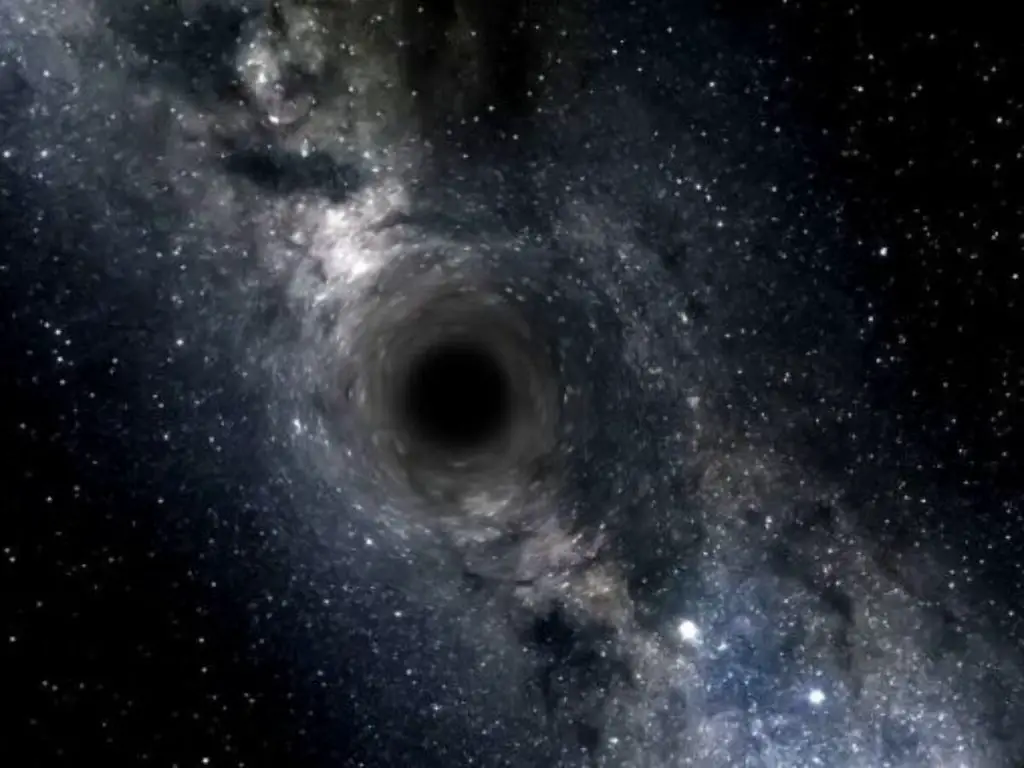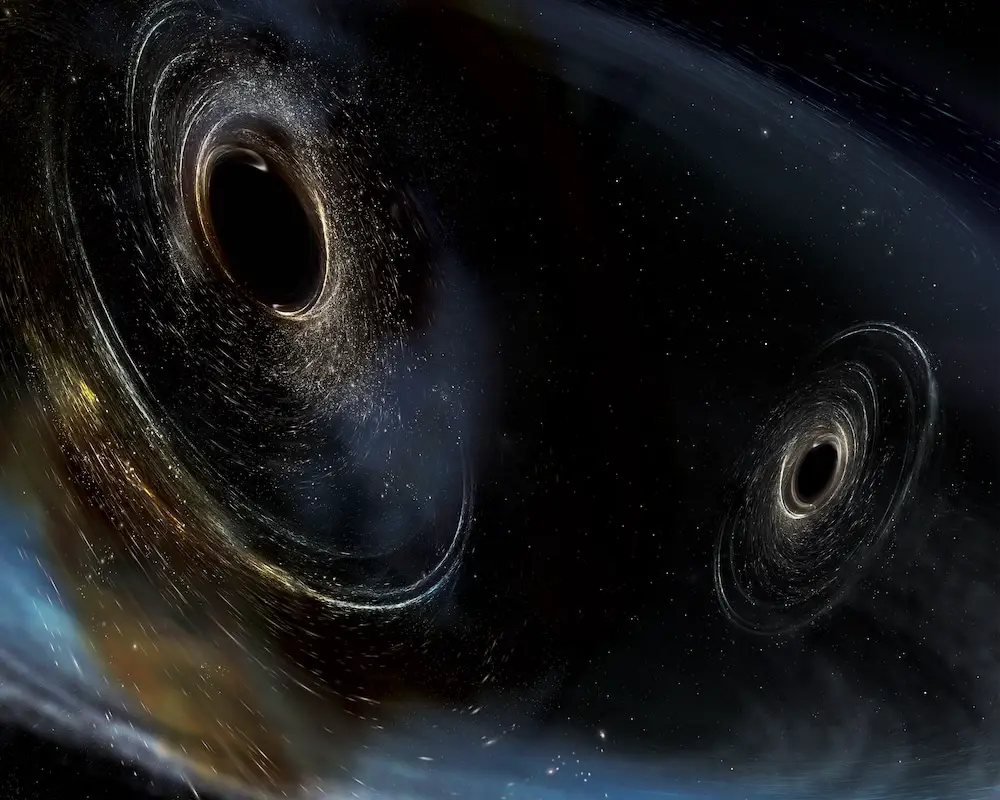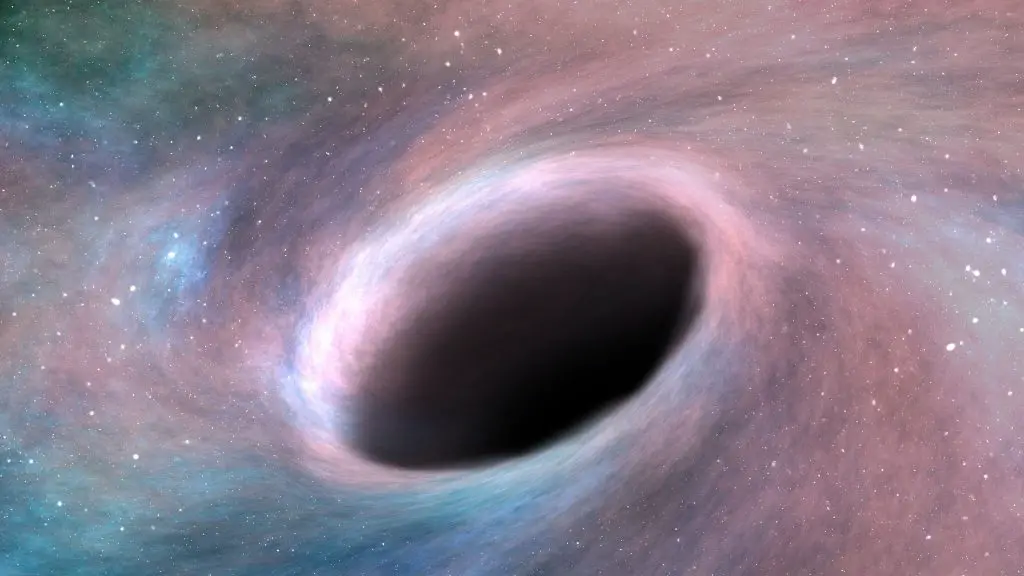A sizable portion of the Universe’s matter may have been made up of microscopic black holes since the dawn of time – and they may be devouring stars from the inside out, according to a new study.
Do black holes “devour” stars from the inside?
The research seeks to solve the mystery of dark matter, an elusive entity believed to make up 85% of the mass of the universe, but which does not interact with light and is effectively invisible. While the nature of this elusive dark matter remains an enigma, there is no shortage of ideas.
An interesting suggestion is that it is made up of primordial black holes (PBHs). In a new study published in Monthly Notices of the Royal Astronomical Societyscientists studied the effect of PBHs when they become involved in star formation.
Many black holes form when massive stars die. Following supernova explosions, matter is so compacted that its gravity overcomes the external force of the explosion, sometimes causing the core of the previous star to collapse into a black hole. In the 1960s, scientists realized that black holes could also form directly from extremely compact regions of matter in the first seconds after the Big Bang.
These primordial black holes could have a mass ranging from the mass of a dust particle to thousands of times the mass of our sun. Although there are many unanswered questions about PBHs, scientists believe they could make up some of the missing mass in the Universe.
The first detection of gravitational waves by the Laser Interferometer Gravitational Wave Observatory and its counterpart, the Virgo Interferometer, has created new possibilities for studying these primordial black holes, the lead author of the study Nicolas Esser, a theoretical physicist at the Université Libre de Bruxelles.
Esser and his co-authors studied what happens when PBHs with the mass of a large asteroid interact with the giant gas clouds where stars form.

They found that PBHs of this size, packing their mass into a space no larger than a drop of fog, could be captured by the gravitational pull of forming stars.
Some of these PBHs will have orbits that drag them directly through the forming star; each time this happens, the black hole loses some speed due to friction. After many passes through the newborn star’s increasingly dense interior, the microscopic black holes are eventually captured within the star.
Stars that capture a PBH in this way do not live normal lives. The black hole begins to consume the star from the inside, feeding on the hydrogen that fuels it and supports nuclear fusion in the core.
It is “very likely” that a swirling cloud of gas will form from the stellar material and spiral toward the black hole, called an accretion disk, Esser said. It’s not yet known whether all that material will fall into the black hole or cause an explosion, but that could “lead to direct signatures of PBH that could potentially be detected,” Esser said.
The result of this cosmic cannibalism: destruction, especially among older stars with about 80% of the mass of our sun. Esser was surprised to find that the probability of destruction for stars of this size was much higher than for smaller stars.
This would lead to a deficit of older, larger stars in galaxies where PBHs are likely to exist. This, in turn, would help explain dark matter because “infected stars turn into virtually invisible black holes.”
The best place to look for this deficit is in ultrafaint dwarf galaxies. According to Esser, having enough stars consumed by black holes to be detected “would require a high density of dark matter” and for PBHs to move slowly through the host galaxy to be captured by forming stars.

“Based on our observations and models, these conditions are currently met only in ultrafaint dwarf galaxies.”
“The Hubble and James Webb space telescopes are both able to detect this effect. We are currently examining the possibility that the Euclid telescope could also detect it,” Esser said. If the number of older, larger stars is as expected, this would help scientists rule out these asteroid-mass PBHs as dark matter.
If there weren’t as many as expected, it would be exciting. “A deficit of older stars in ultrafaint dwarf galaxies would clearly be a hint that the dark matter could consist of asteroidal-mass PBHs,” Esser said, cautioning that there could be other explanations.
Such a discovery could offer tantalizing evidence for the existence of PBHs and could also help explain what might be some of the Universe’s elusive dark matter.
The largest map ever created of active supermassive black holes in the Universe
Researchers have unveiled a moving 3D map of supermassive black holes covering the largest volume of our universe ever mapped.
The map is made up of 1.3 million quasars, which are nuclei of active galaxies powered by supermassive black holes and some of the brightest cosmic objects in existence.
According to a statement released by the Simons Foundation of New York, which funds and supports research in science and mathematics, the light emitted by quasars comes from the gravitational attraction of the supermassive black hole on nearby gas clouds.
When friction heats these clouds, they can form a bright, fast-moving disk from which they occasionally emit powerful jets of light.
The new map, called Quaia, is a catalog of quasars based on data collected by, among other sources, the European Space Agency’s Gaia space telescope. It appears in a new study published Monday (March 18) in The Astrophysical Journal.

“This quasar catalog is different from all previous catalogs in that it gives us a three-dimensional map of the largest-ever volume of the universe,” said map co-creator David Hogg, an astrophysicist at New York University and senior research scientist at New York University. The Simons Foundation’s Flatiron Institute said in the statement.
“It’s not the catalog with the largest number of quasars, and it’s not the catalog with the highest quality quasar measurements, but it’s the catalog with the largest total volume of the mapped universe,” Hogg added.
Researchers can learn a lot from quasars. Their evolution is intertwined with that of the galaxies that host them, so studying them gives scientists insight into the mysteries of how supermassive black holes grow and how massive galaxies form, according to the study.
Galaxies with quasars are also surrounded by dark matter – an invisible substance believed to comprise 85% of the total matter in the universe – giving researchers the opportunity to learn more about this enigmatic substance, including how aggregates, according to the statement. The standard model of cosmology suggests that these clusters influence the distribution of regular matter in the Universe.
To draw their map, the team combined data from Gaia’s third June 2022 data release, which reported more than 6 million quasar candidates, with data from NASA’s Wide-Field Infrared Survey Explorer and Sloan Digital SkySurvey.

The Gaia space telescope has been mapping the Milky Way since it launched in 2013. While its mission is focused on our galaxy, the telescope also records objects outside the Milky Way, including quasars, according to the statement.
“We have been able to make measurements of how matter clumps together in the early universe that are as precise as those from major international sensing projects – which is quite remarkable given that we got our data as a ‘bonus’ from the focused Milky Way about the Gaia project,” said lead author Kate Storey-Fisher , a postdoctoral researcher at the Donostia International Physics Center, a research institute in Spain.
#stars #infected #black #holes #destroy